
Via streaming data, Jim Harris says machines can learn some amazing things without being programmed with domain knowledge.

Via streaming data, Jim Harris says machines can learn some amazing things without being programmed with domain knowledge.
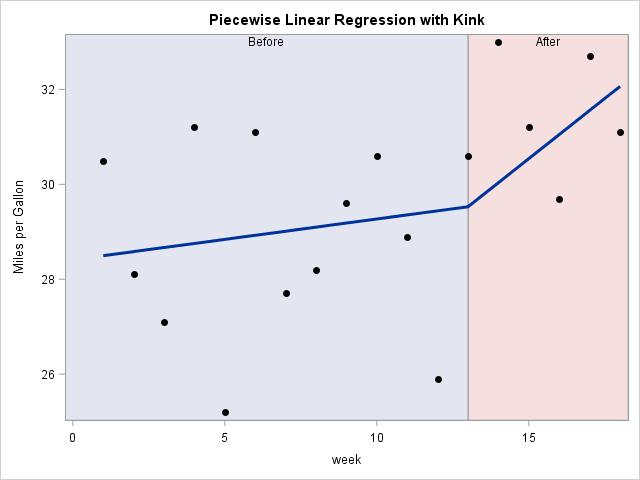
Most regression models try to model a response variable by using a smooth function of the explanatory variables. However, if the data are generated from some nonsmooth process, then it makes sense to use a regression function that is not smooth. A simple way to model a discontinuous process in

Success in the retail space boils down to one simple function: the conversion of sales. However, retailers can only do this if they have stock readily available. Missing a sales opportunity due to poor stock management just won’t cut it in today’s marketplace. How can we resolve this basic problem
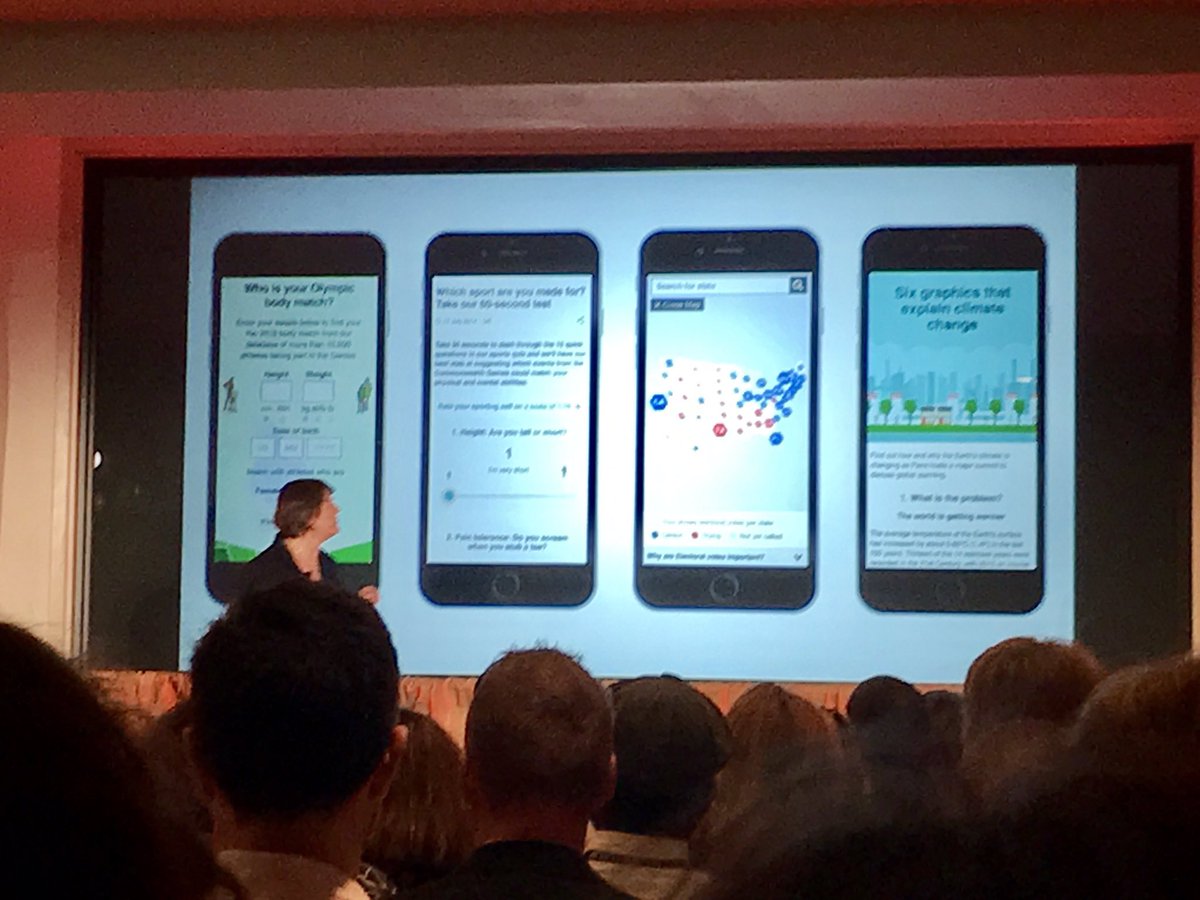
In an industry full of word people, it's not uncommon to hear journalists lament, “Data, what are you doing here!?” But today, data is a tool in the newsroom, and reporters often need to know how to analyze and present data to readers as part of their role in communicating information to the public.

Two minutes in, I knew the 2017 SAS Global Forum Technology Connection would not be typical or average. For one thing, it was SAS Chief Technology Officer Oliver Schabenberger's show, and nothing he does is ever typical or average. The first surprise of the morning was his entrance. He zoomed onto the stage on a Segway, using slight

Opening Day is here! Every game experience at the ball park is memorable for my family. I'm excited to smell the fresh popcorn and peanuts. I love holding cold drinks in hopes of catching a foul ball with my cup. I’m anxious to see my team’s new prospects in action

Auch wenn der Hype von Gartner für beendet erklärt wurde: An Big Data und der Auswertung entsprechender (oftmals unstrukturierter) Datenmengen kommt kein Unternehmen vorbei. Doch welche Herausforderungen stellen Big Data und damit einhergehende Entwicklungen an das Data Management? Wie können Data Scientists, IT und Fachabteilung heute zusammenarbeiten? Und wo prallen
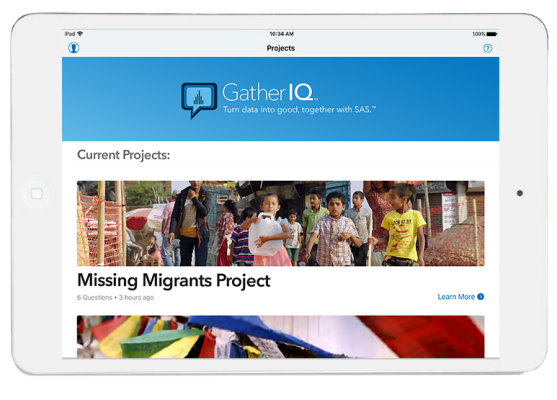
What is SAS Global Forum if it isn't a conference that celebrates the ways that individuals can make a difference with data and analytics? Indeed, one of my favorite tweets from last night's opening session said: If the keynote sessions were just video biographies about how data people matter I would

Analise Polsky says analytics success for midsize business depends on getting the basics right and maintaining a data focus.

Operators of transmission networks and wholesale electric markets – ISOs (Independent System Operator) and RTOs (Regional Transmission Organizations) – have undergone sweeping changes in recent years, and the pace won’t be letting up anytime soon. With opportunities ranging from the growth of renewables to newly data-rich operating environments, and challenges
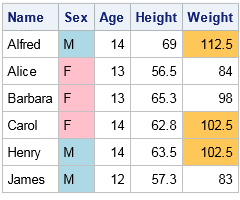
One of the advantages of the new mixed-type tables in SAS/IML 14.2 (released with SAS 9.4m4) is the greatly enhanced printing functionality. You can control which rows and columns are printed, specify formats for individual columns, and even use templates to completely customize how tables are printed. Printing a table

여러분, SAS 무료 이러닝 사이트를 알고 계시나요? SAS 소프트웨어를 사용하는 고객들께서는 본사의 영문 e러닝을 무료로 활용할 수 있습니다. 먼저 SAS 홈페이지에서 ID와 PW를 만든 후 https://support.sas.com/edu/viewmyelearn.html 로 접속하여 로그인 해주세요. 그럼 아래와 같은 Product 코드 입력창이 나타나게 됩니다. 2. 가지고 계시는 SAS 라이센스를 클릭 하시면 아래와 같이 setnumid라는 숫자가 있습니다. 3. 위 코드 입력 창에 대문자 G와 setnumid를

Security analytics has gotten a lot of attention in the industry the last few years. That’s not surprising. After all, security analytics can help organizations: Transition from reactive threat firefighting to proactive security risk management. Exploit all available security data to develop better insights and priorities. Maximize the effectiveness of
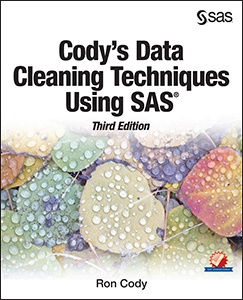
There's an old song that starts out, "You Can Get Anything You Want at Alice's Restaurant." Well, maybe you are too young to know that song, but if you’re a SAS users, you’ll be glad to know that you can capture anything produced by any SAS procedure (even if the

Dieser Weg … Kann er leichter sein? Regelmäßig begeben wir uns in ein Hamsterrad. Für die Erfüllung von Regulatorik und Compliance sind auf dem Weg bis zum Reporting viele vorgelagerte Schritte notwendig. Diese zu bewältigen, ist sehr mühsam: Die beteiligten Fachbereiche und Systeme sind meist sehr heterogen aufgestellt, die Prozessschritte
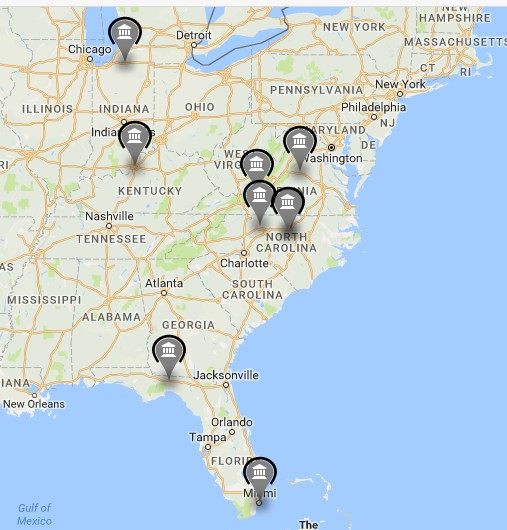
March Madness is in full swing. And the success of the Dance Card formula powered by SAS -- along with stories about teams like the New York Mets, the Boston Bruins, the Orlando Magic and more, all using analytics -- demonstrates how sports and analytics are becoming more and more

인공지능 vs. 인간, 세기의 대결 이후 1년 전 세계가 주목했던 인공지능(AI)과 인간의 바둑 승부! 인공지능의 놀라운 가능성을 확인했던 세기의 대결 이후 벌써 1년이 지났습니다. 그렇지만 인공지능에 대한 관심은 여전히 뜨거운데요. 이제 머신러닝과 딥러닝까지 가세해 대기업은 물론 스타트업과 벤처캐피탈 그리고 정부 정책에 이르기까지 글로벌 이슈를 이끌고 있습니다. 실제 구글, 마이크로소프트, 아마존,
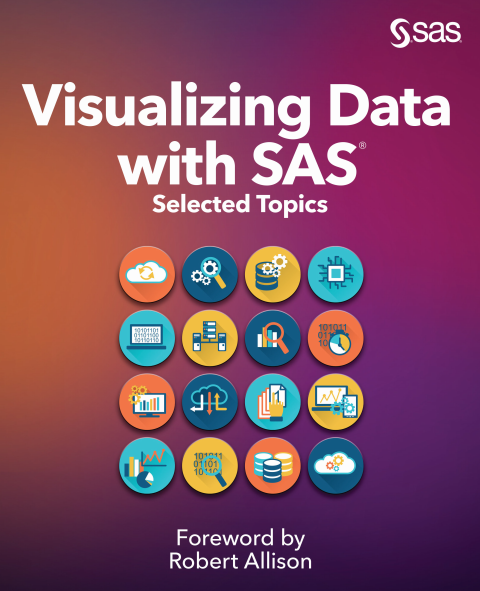
If you're into data visualization, here's something that might interest you - a free eBook showing several ways to use SAS to visually analyze your data. (Did I mention it's FREE?!?!) We've picked juicy chapters from several books and upcoming books (and a few other sources), to show you what

제조 업체들은 정치, 경제, 재무, 경쟁사 등 다양한 당면 과제 속에서 비즈니스를 운영하고 있습니다. 앞으로의 제조 환경도 글로벌 경제 위기 때만큼이나 불확실해 보이는데요. 그렇지만 제조업의 성장 기회는 분명 있을 것입니다. 최근 제조 산업에는 ‘인더스트리 4.0’이라는 새로운 시대의 막이 오르고 있습니다. 새 시대에는 자동화, 대규모 데이터, 분석이 사물인터넷(IoT), 클라우드 컴퓨팅과 융합하고, 가상 및

@philsimon says that old stalwarts sometimes just don't cut it.

뉴욕 주 금융 당국(NYDFS), 금융 사이버 보안 규정 발표 최근 미 뉴욕 주 금융서비스국(NYDFS)은 뉴욕의 은행, 보험사, 기타 금융 기관을 대상으로 새로운 사이버 보안 규정을 발표했습니다. 2017년 3월 1일부터 효력을 발휘한 이 규정은 소비자와 금융 서비스 산업 전체를 보호할 사이버 보안 프로그램의 개발과 유지를 골자로 합니다. 이 사이버 보안 지침은 2016년 9월

스티븐 스필버그 감독과 톰 크루즈 주연의 영화 ‘마이너리티 리포트’는 예술적 측면뿐 아니라 사회적으로도 다양한 이슈를 만들었습니다. 톰 크루즈가 맡은 주인공 존 앤더튼은 도시 곳곳에 설치돼 신원을 확인하는 홍채 인식 시스템으로부터 숨기 위해 안구 이식 수술을 받는데요. 영화와 달리 안구 이식 수술은 현실에서 아직 가야 할 길이 멉니다. 하지만 ‘편재형 개인

데이터 사이언스와 데이터 사이언티스트에 대한 설전과 토론이 맹렬한 가운데 여러 기업들이 다수의 데이터 사이언티스트 채용 및 고용에 적극적으로 나서면서 데이터 사이언티스트에 대한 수요가 실제 취업 예정자 공급을 추월하기 시작했습니다. 이로 인해 데이터 사이언티스트의 효과적인 유치 및 유지라는 화두 역시 IT 및 비즈니스 커뮤니티에서 뜨거운 감자로 떠올랐습니다. 이러한 상승세에서 기업은 모두가 탐내는

미국의 최고 권위의 과학자인 버니바 부시(Vannevar Bush)가 기계가 생각하고 학습하는 미래를 예측한 것이 1945년이었습니다. 당시까지만 해도 과학적 공상으로만 보였던 것이 이제는 Google 검색 결과 같이 평범한 사물까지도 머신러닝의 산물이 되고 있습니다. 넷플릭스(Netflix)는 머신러닝을 사용하여 개인 맞춤형 영화 추천 서비스를 제공하고 있습니다. eHarmony는 머신러닝을 통해 사랑까지 수량화하여 예측합니다. 은행들은 사이버 감시를 비롯해 사기 및 악용

온라인 활동부터 오프라인 구매 및 소셜 노출에 이르기까지 Walmart는 전 세계 어느 리테일러보다 광범위한 고객 네트워크를 자랑합니다. 글로벌 고객 인사이트 분석 부문 수석 이사인 다니엘 소프(Daniel Thorpe)에 따르면 회사의 주간 소셜 노출만 30만 건에 달한다고 합니다. 소프는 분석 팀을 이끌면서 고객 스스로 생산하는 행동 데이터를 기반으로 고객에 대한 전반적인 이해를

사물 인터넷(IoT)은 기본적으로 센서가 내장된 장치가 서로 연결되어 구성하는 네트워크를 말합니다. 이러한 장치들이 네트워크나 클라우드 기반 소프트웨어 플랫폼을 통해 물리적 세상에서 데이터로 소통하고, 분석하고, 공유할 수 있는 것도 IoT가 있기에 가능합니다. 리테일 분야에서 ‘사물’의 범주에 RFID 재고 추적 칩, 기존의 매장 내 적외선 방식 풋 트래픽(foot traffic) 카운터, 셀룰러 및 Wi-Fi

정부의 주요 목표 중 하나는 국민을 더욱 행복하게 만드는 것입니다. 그런데 과연 ‘행복’이란 무엇일까요? 우리는 행복의 핵심 요인을 찾아내고 행복을 객관적으로 측정할 수 있을까요? 정부는 행복을 극대화하는 정책과 프로그램을 실행할 수 있을까요? 아랍에미리트연방(UAE), ‘행복부’를 신설하다 2016년 2월 아랍에미리트연방(UAE)은 ‘행복부(Ministry of Happiness)’라는 부처를 신설했습니다. 행복부의 초대 장관으로 오후드 알 루미(Ohoud Al Roumi)가
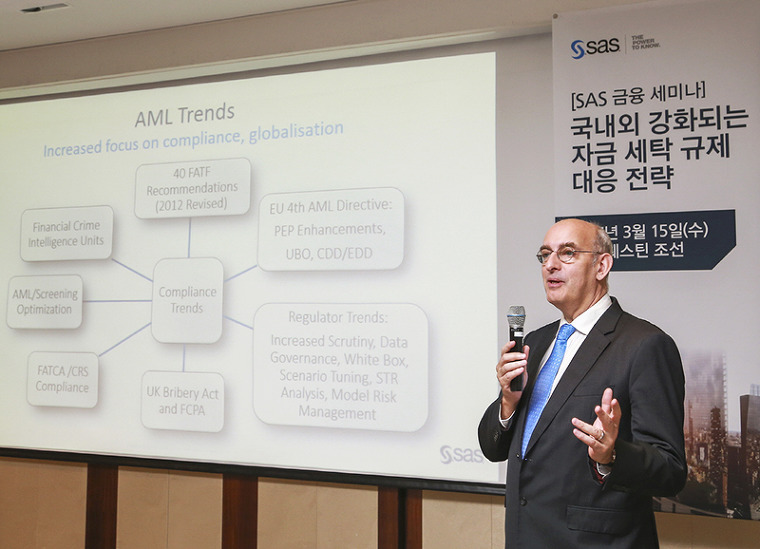
주요 금융사 준법감시실 자금세탁방지 담당자 대상 ‘자금세탁 규제 대응 전략 세미나’ 개최 글로벌 자금세탁방지 규제 동향 및 SAS 솔루션 활용한 규제 대응 방안 공유 자금세탁방지 규제 위반 시 재정적 피해는 물론 기업 명성에도 부정적 영향...빅데이터 분석 통한 유연한 대응 필요 2017년 3월 15일, 서울 세계적인 분석 선두 기업 SAS(쌔스)코리아(www.sas.com/korea)가 15일
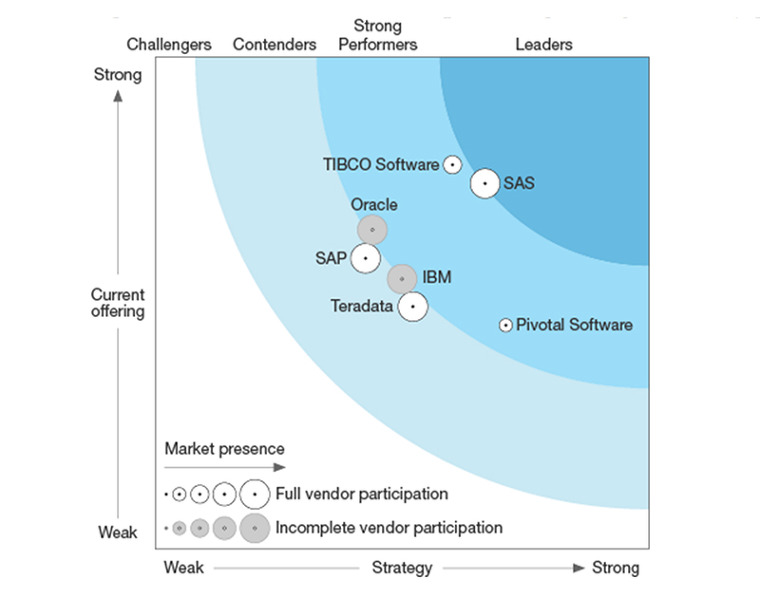
‘포레스터 웨이브: 2016년 4분기 엔터프라이즈 인사이트 플랫폼 스위트’ 보고서에서 단독 리더로 선정 전략∙최신 오퍼링∙시장 입지 평가 항목에서 높은 점수 획득 ··· 기업의 의사 결정 시점에 인사이트 적용을 지원하는 차별화된 리더로서 확고한 입지 개방형∙클라우드 기반 분석 아키텍처 ‘SAS 바이야(SAS Viya)’, 보다 현대적이고 단순화된 아키텍처로 높이 평가 2017년 1월 23일, 서울 세계적인

The U.S. Marshals Service is the federal agency known for bringing wanted fugitives to justice. Often, the Marshals Service gets attention for these arrests, but once the publicity has died down they face a basic challenge --- where to put the individuals in their custody. The agency uses data to